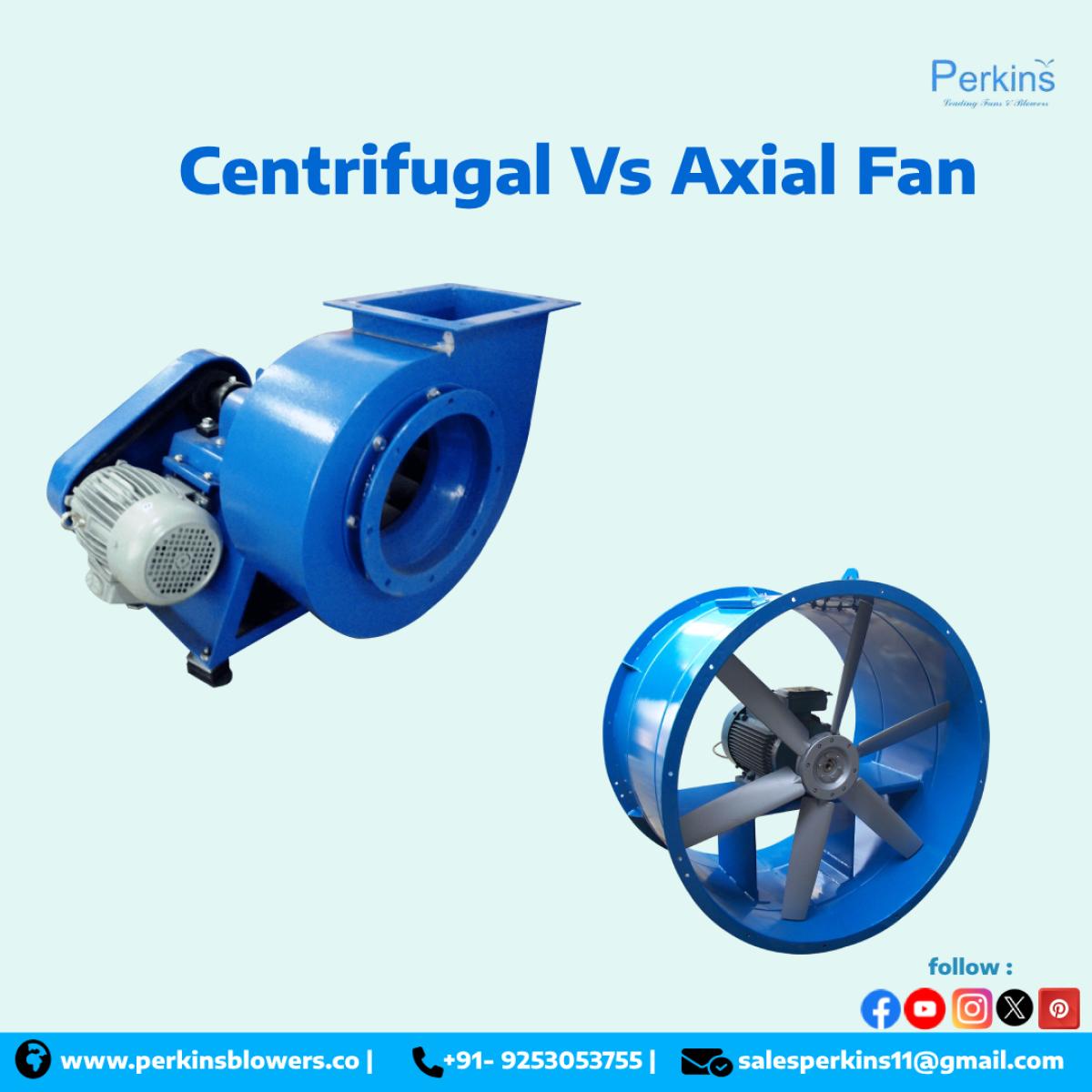
When it comes to industrial ventilation and air movement, choosing the right type of fan can make a significant difference in performance, efficiency, and cost-effectiveness. The two most common fan types used across industries are centrifugal fans and axial fans. Each has distinct features and benefits, making them suitable for different applications. At Perkins Blowers, we specialize in manufacturing both centrifugal and axial fans designed to meet the diverse needs of industries across India.
Understanding Centrifugal Fans
Centrifugal fans, also called “blowers,” move air by drawing it into the center of a rotating impeller and then pushing it outward through blades at a 90-degree angle. This design produces higher pressure airflow, making centrifugal fans ideal for applications that require air movement against resistance.
Key Features of Centrifugal Fans:
-
High Pressure Capability – Perfect for systems with ducts, filters, or resistance.
-
Durability – Built to withstand demanding environments like cement plants, boilers, and dust collection systems.
-
Versatility – Available in forward-curved, backward-curved, and radial blade designs.
Common Applications:
-
Dust collection systems
-
Material handling
-
HVAC systems in industrial plants
-
Boiler combustion air supply
Understanding Axial Fans
Axial fans move air parallel to the shaft, similar to the way a household ceiling fan works. They are best suited for applications where large volumes of air need to be moved at low pressure.
Key Features of Axial Fans:
-
High Airflow at Low Pressure – Designed for ventilation and cooling.
-
Energy-Efficient – Consumes less power when high airflow with minimal resistance is required.
-
Compact Design – Easy to install and maintain.
Common Applications:
-
Cooling towers
-
Ventilation of large spaces like warehouses and workshops
-
Condenser cooling in HVAC systems
-
General exhaust systems
Centrifugal vs. Axial: Choosing the Right Fan
When deciding between centrifugal and axial fans, consider the following factors:
-
Airflow Needs – If your operation requires high volumes of airflow with little resistance, axial fans are the best choice. For higher resistance systems, centrifugal fans are more efficient.
-
Pressure Requirements – Centrifugal fans are better suited for high-pressure environments, while axial fans are ideal for low-pressure needs.
-
Space & Installation – Axial fans typically require less space, making them ideal for compact installations.
-
Energy Efficiency – Axial fans tend to consume less energy in free-air conditions, while centrifugal fans are more efficient under heavy load.
-
Application Specifics – For example, dust extraction would need centrifugal fans, while cooling a large factory floor would benefit from axial fans.
Why Choose Perkins Blowers?
At Perkins Blowers, we are a trusted name in the manufacturing of centrifugal fans and axial fans across India. With decades of expertise, precision engineering, and a commitment to quality, we deliver fans that ensure reliable performance, energy efficiency, and durability. Our solutions are tailored to meet the specific requirements of industries such as cement, steel, pharmaceuticals, HVAC, and power plants.
Final Thoughts
Both centrifugal and axial fans play crucial roles in industrial and commercial applications. The right choice depends on your airflow requirements, pressure conditions, and operational environment. At Perkins Blowers, we don’t just supply fans—we provide solutions. Our team can help you analyze your system’s requirements and recommend the right fan that maximizes efficiency and performance.
